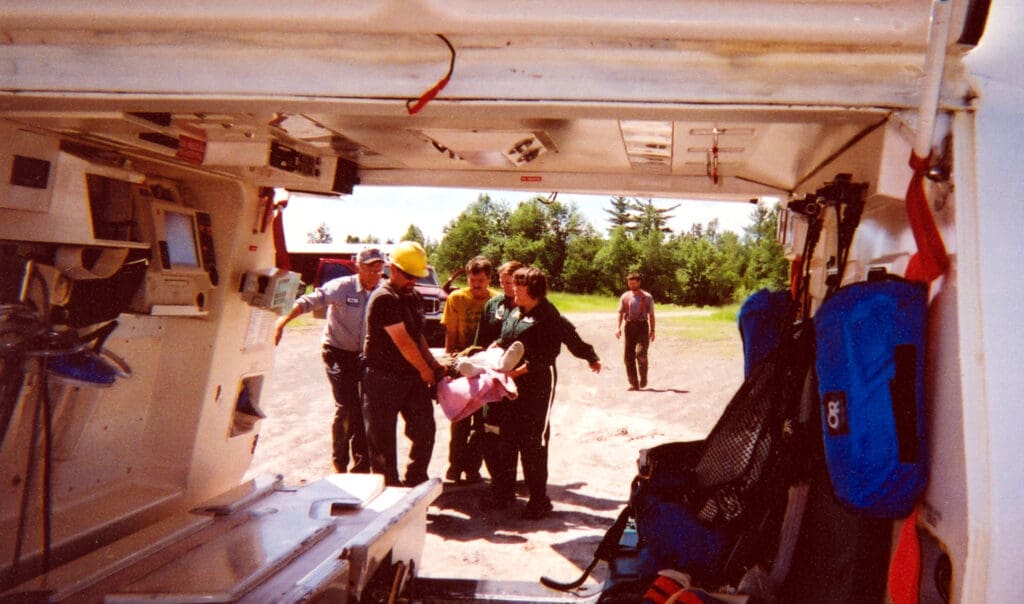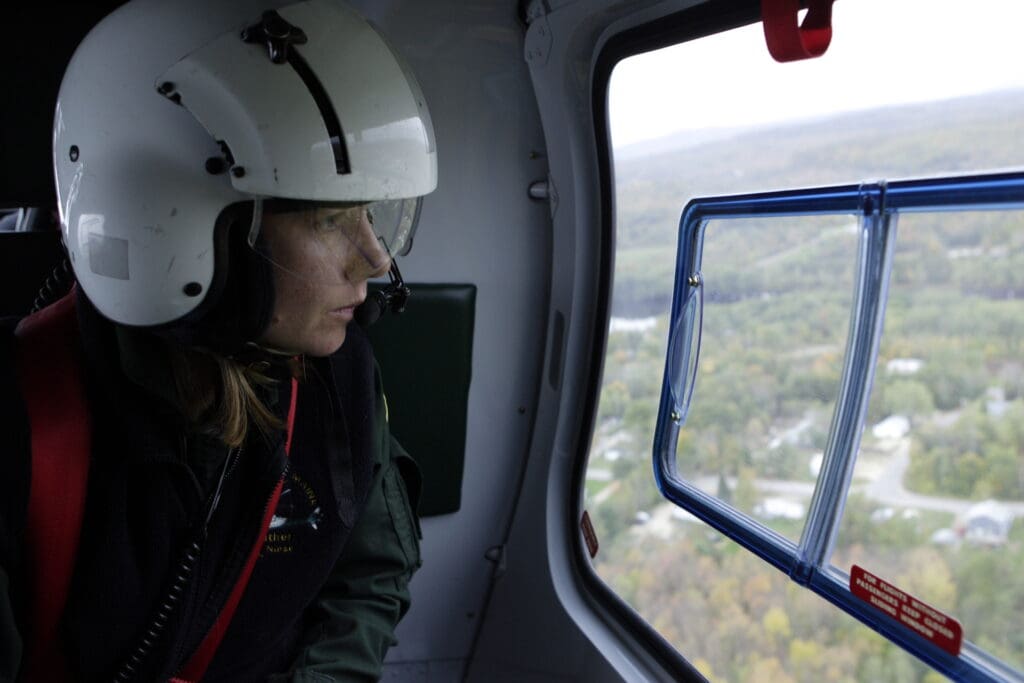Then and Now: 1998-2023
We started LifeFlight with a vision, a set of design principles, and a simple sheet of instructions.

by Tom Judge
This article appeared in the October 2023 issue of Dispatches.
We knew that critically ill and injured patients were experiencing poor outcomes and otherwise avoidable deaths merely due to time. Our vision was to build a system able to change the geography of time and give critically ill patients a better chance of an optimum health outcome — “unexpected survivors” despite the odds.
We designed LifeFlight to be “of Maine” using Maxwell Quality/Dimension pillars: do we measurably improve access; do we measurably improve equity by caring for all ecumenically and non-competitively; do we measurably improve our quality and effectiveness; do we operate at the best economic efficiency, producing the best results and the lowest costs; do we deliver care appropriate to need based on evidence and research; and do we respond to changes in the healthcare environment. We added a seventh: to operate the safest, most reliable, and most trustworthy system possible.
The instructions were short and to the point on a white sheet of paper: never compromise safety, build a world-class system, and operate economically. With initial funding from Eastern Maine Healthcare Systems (now Northern Light Health) and Central Maine Healthcare, we built a world-class air medical system to support Maine’s emergency medical services (EMS) and hospitals.
The vision and the design were courageous, the instructions were clear, but the reality was we were starting from scratch with core, but not full, funding. We were a new, small, private nonprofit with a huge and statewide public mission. While we could develop the clinical and aviation teams, lease helicopters, and start building communications, Maine did not have helipads, rural weather reporting, refueling stations, communications, facilities to support aviation, or EMS and hospital providers experienced with a medical helicopter system.

We announced the creation of LifeFlight in early April 1998, and a few short months later in September, we flew our first patient from the woods above Deblois. From the outset we were able to engage Maine’s leading physicians from hospitals across the state — emergency, trauma, pediatric, cardiac, intensive care specialists, and neonatologists — to oversee LifeFlight’s clinical teams. We were able to recruit a gifted group of Maine’s nurses and paramedics to create the first two flight teams, and we engaged a high-quality aviation firm specializing in operating medical helicopters for nonprofit healthcare organizations.
As you can see from a few of our highlights in these pages, each day since has been a journey, piece by piece building a world-class system. We have achieved continuous national accreditation and won numerous national awards for safety, community service, our accountable culture, and innovation. In 2003, we created The LifeFlight Foundation to assure stakeholder interest for everyone in Maine.
“LifeFlight’s core values derive directly from the celebrated Maine culture of resourcefulness and humanity — to deliver health care to the farthest reaches of our state with soul, safety, speed, and cutting-edge technology and medical practice. In so doing, LifeFlight has amplified and leveraged the talent of every health care provider across the bucolic beauty of this place we call ‘home.’”
Norm Dinerman, MD
Founder and medical director
In 2008, after only ten years, our peers across the US and Canada recognized and honored us as the top program in North America. We have collaborated with programs around the world, added new therapies and more complex medicine, built a first-in-the-nation aviation infrastructure, added an airplane for long distance transports, added new bases and specialized ground transport, and started a national demonstration project with the Federal Aviation Administration (FAA) on “next gen” precision instrument routing. In 2019, we began the process to create our own FAA approved Air Carrier Certificate, and with support from our Foundation replaced our helicopter fleet with state-of-the-art aircraft, completing both in 2022.
Each day we innovate, guided by our vision for 2030 and beyond. We will continue to meet the needs of the increasingly challenged rural healthcare landscape. Together with our colleagues across the country and the world, we are researching new diagnostic technologies delivered to the point of need, new communications technologies that link teams and vehicles to specialist physicians providing remote decision support to EMS and community hospital emergency departments, new and greener flight and ground technologies, and new ways to deliver care within the Maxwell pillars.
While the faces at LifeFlight will change over time, our constant touchstone is our vision, our design principles, and our commitment to always perform at our best for our patients. There are moments of wonder in saving someone’s life, helping to welcome a newborn into the world, and holding someone’s hand on the worst day of their life — the most powerful therapy in medicine. And equally there are incredibly challenging moments when only our belief in the gift of service gets us through. To be there for our patients, that is why we are here — LifeFlight of, for, belonging to Maine.
Tom Judge is the founding executive director of LifeFlight of Maine.
